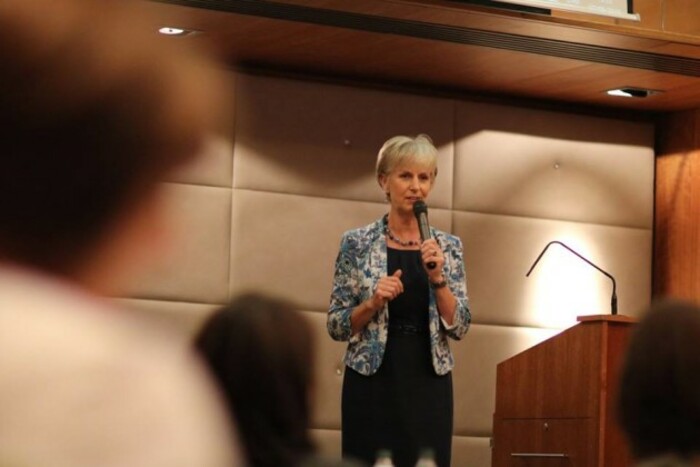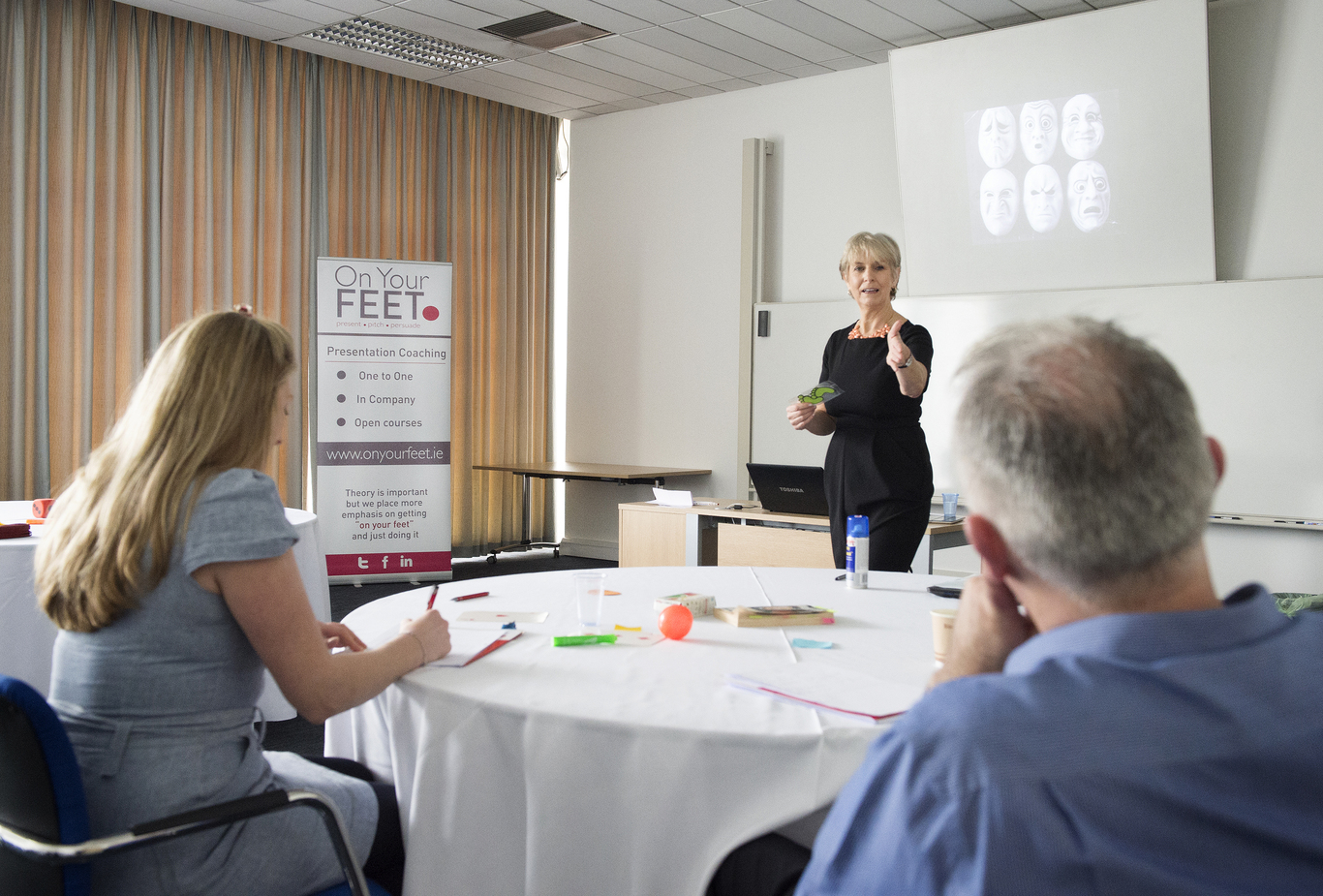'A good speech is like a miniskirt. Long enough to cover up but short enough to be interesting'
Public-speaking trainer Barbara Moynihan delivers a masterclass in making presentations.
IF YOU’RE WORRIED about speaking at an event, remind yourself that this isn’t your core skill.
For example, if you’re a marketer, you’re brilliant at marketing. You don’t have to be the Steve Jobs of public speaking. You just need to be good enough to get your message across.
Addressing a room full of your peers is a great way to raise your profile, so if you’re invited to speak at a conference or event, you should go for it.
With that in mind, here are some tips to help people in business properly prepare for a speech.
Do your homework
The first thing you should do is find out if the event has a theme. This will help you tailor your content so it fits in with other topics on the day.
You should also check how the event is structured. Will there be a Q&A afterwards? How much time will you have? Will there be a panel discussion as well?
But the most important thing you need to do is find out who exactly is going to be there.
I’d ask the organisers for a rundown of the attendees list. If it’s a regular event – like a weekly or monthly gathering – contact people who have been before and ask them what it’s like.
 Barbara Moynihan
Barbara Moynihan
When you have a good understanding of the audience – their interests, their problems, their pain points – you’ll know what’s expected of you when you’re delivering your speech.
You always want to give your audience a few tangible takeaways that they can actually use in their working life, so make a list of five to seven key learning points and shape your speech around that.
Feel free to mention your business if it’s relevant, but don’t just plug yourself – your content will do that for you.
Slides come second
Once you have an understanding of the audience, you should start putting together your main talking points. Base them off the five to seven key takeaways I mentioned before.
If you’re using slides, put them together after you’ve finalised your content. A lot of the time people put their slides together first, but that really is putting the cart before the horse.
If you do your slides after you have finalised the content, they are more likely to be more relevant and add to rather than detract or distract from your message.
Less is more when it comes to the visual part of your speech. The more slides you have, the fewer people will grasp what you’re saying.
I’ve seen people delivering presentations with the guts of 10 slides per minute, which is an awful lot.
You want no more than two slides per minute. I know that’s sometimes hard for business people because they need charts and other details, but you should try your best to keep it to a minimum.
Your slides shouldn’t be too text heavy either. There’s a brilliant book called Presentation Zen by Garr Reynolds. He recommends that the maximum number of words per slide is seven.
Remember, a good presentation should be like a miniskirt. Long enough to cover the essentials, but short enough to keep it interesting.
Practice out loud
With your content and slides in place, it’s time to start practicing your speech – out loud. People think preparing a speech is looking at their slides and rehearsing it in their head. It isn’t.
I’d never suggest writing a full speech and trying to memorise it. That’s way too much pressure, because if you lose a sentence, you’re gone.
You just need to know your opening and closing, almost verbatim. The first 20 seconds and maybe the last 20 seconds. That’s it. For the rest, you’ll have your main talking points to refer back to.
When you’ve got the speech right, record yourself and listen back to it in the weeks leading up to the event.
I gave a TEDx talk last October. It was only six minutes long, but I made sure I recorded it and listened back as often as I could - when I was driving the car, in between meetings, or even when out walking.
On the day of the event, you’ll probably leave out bits, but you won’t miss your main talking points if you’ve practiced them.
Leaving out a bit of detail is not that important. Nobody knows your script, only you. If it’s that critical, it will likely come up in the Q&A.
Don’t sweat about stumbling. When I gave my TEDx talk, on my first line – my first line - I fluffed it. But it kind of relaxed me.
In an ideal world, you’ll present without notes because we’ve got to just trust ourselves that we’re going to get the main bits across.
Having said that, if you’re new to speaking and you’re not as confident as you’d like to be, it’s perfectly fine to have cursory notes at the podium to help you along. Whatever it takes to help make a success of your speech.
What to do with your hands
If you don’t know what to do with your hands when you’re speaking, just use them as if you’re talking normally. It’s as simple as that.
When you’re comfortable with your content, you’ll be less aware of what you’re doing with your hands and they’ll just flow as normal.
I sometimes find people in my public speaking workshops clutching their hands in the’ fig leaf’ position.
That can often be because they were told before that they use their hands too much, but if you use your hands a lot naturally – why then would you stop using them in a presentation?
The last thing you want to do is like go up to the podium and turn into the ‘speaking’ version of yourself.
Make eye contact
Never, ever, stare at the back of the room. A wall is an object, which isn’t going to give you any reflection back. We feed off each other, so when you’re speaking make eye contact with people in the audience.
The beauty of looking at people is that you’ll go into ‘conversation mode’ and feel like you’re just talking to one person. Your tone and engagement level will change. It’s much more personal.
If you find eye contact quite scary, look at people’s eyebrows in a smaller room. In a bigger room, you’ll get away with looking at their forehead. Either way, you’re looking at a person not the wall, which is just horrendous.
You should always think of your speech as a conversation, not a presentation. It’s just you standing up there.
You’re not Martin Luther King. You’re not a politician. You’re not ‘delivering’ a speech. You’re just sharing information.
Barbara Moynihan is founder of On Your Feet, a company that provides public speaking training. This article was written in conversation with Conor McMahon as part of a series of masterclasses with some of Ireland’s most influential business people.
If you want to share your opinion, advice or story, email opinion@fora.ie.






